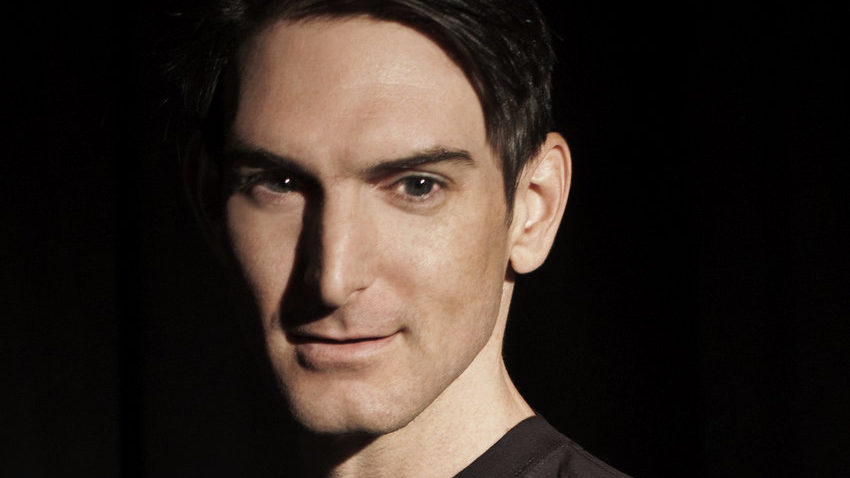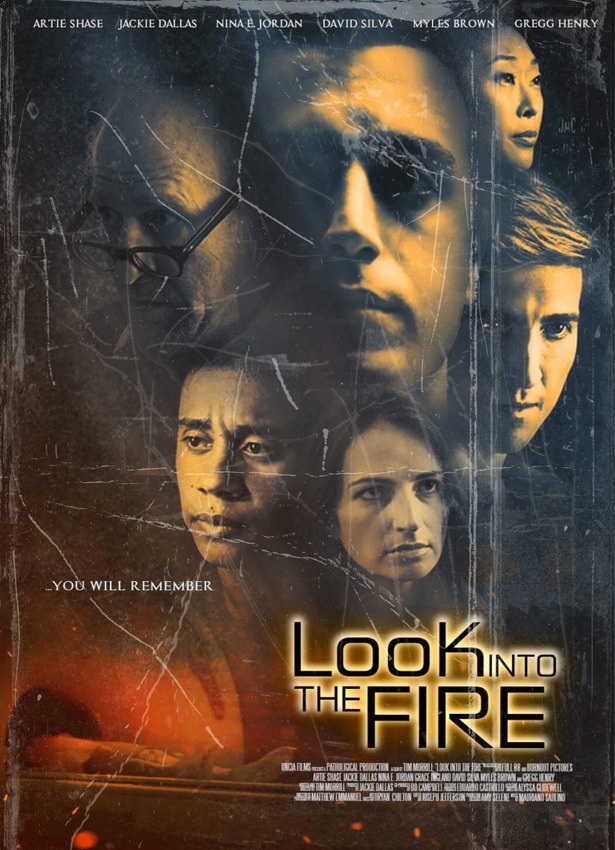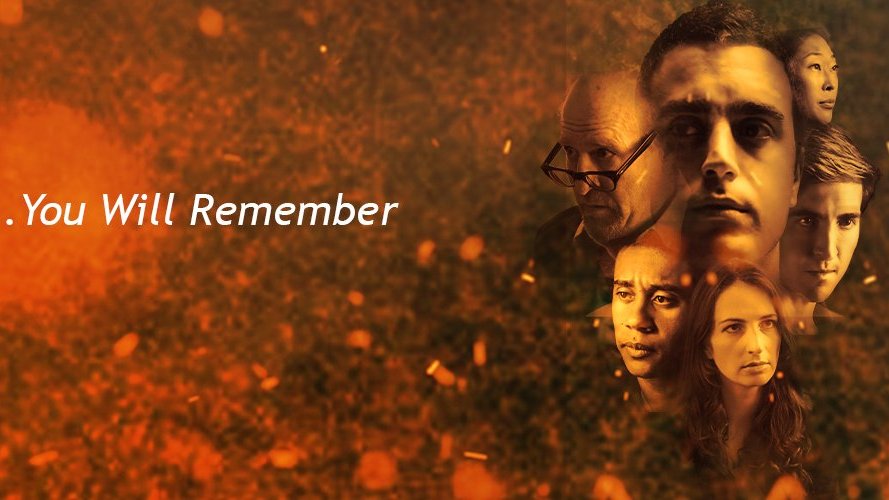
Tim Morrill is a San Francisco Bay Area director and cinematographer. He has with experience in short and feature films, commercials, live events, and PSAs. As a Cinematographer he has shot PSAs for the Stomp Out Bullying, Handful Players, and Sunday Streets – Tenderloin. And also Hip Hop for Change organizations. On the directing side, I have directed the short film Cleansing the Palate and Writer’s Block. I have also worked on films starring Eric Roberts, Tony Todd, Clifton Powell, and Tom Sizemore.
indieactivity: How did you get into directing? How would you describe your style?
Tim Morrill (TM): I think I got into directing just out of pure necessity. Starting out as an actor, you’re just a piece of a bigger vision. But, every time I read a script as an actor, I couldn’t help but find myself interpreting it. The entire piece in my mind breaks into shot choices/compositions and picturing. What I thought the actors should be doing in the scene as well.
This impulse to direct seemed to always be second nature. As I came to realize that it was something I could do. It was a major leap to even direct my first play back in college. Intimidating, frightening, nerve-wracking. But when it was all done, it was something I really enjoyed. So, I tried to find more ways that I could practice directing.
The Official Trailer for Look in the Fire directed by Tim Morrill
I come from a theater background and just in my general consumption of films. The most interesting part of any story is the characters. And so my directing style often favors the performance instead of anything technical. Even though, I love those films that are visually beautiful, most of the time they lack personality. The actors are just pieces being moved around for the plot’s sake. And by the end you are left feeling like nothing significant happened. Character pieces always had a more lasting effect on me.
indieactivity: Do you hire a casting director, or cast by yourself? If so, what criteria go into your casting?
Tim Morrill (TM): I haven’t hired a casting director before because I’ve always liked to be able to look at all the candidates for the characters of the project and match actors to them. The casting is not done completely by me as I’ve always had producers to weigh the pros and cons of a particular actor with. It’s a fun process to cast a project because it becomes a challenge of reconciling the performance that’s in my head with who has shown up for the audition.
I’ve been extremely lucky to have had a combination of actors who fit what has been written on the page and those who were not what I expected but won me over because they were just so good. My criteria for casting is that the actor has to at least embody what I’m looking for in the character and that can be a tough thing to explain because you kind of know it when you see it.

The actor might have a charisma that makes them stand out from everyone else and if you see it in an audition, there’s a pretty good likelihood that it will be the quality that the audience also sees. From there it’s matching them with the rest of the cast and seeing how well that dynamic matches the overall vision.
indieactivity: What went into the casting process for Look in the Fire?
Tim Morrill (TM): The casting for “Look Into The Fire” was done through SF Casting, a casting site in the San Francisco Bay Area. Most local film and television actors submit through them and it was where we found our cast. We submitted the project there and we got a lot of interest for most of the parts, which was great to have so many actors to choose from.
From there we systematically went through our top picks and sent out sides for actors to self-tape and send in their auditions. The process was whittled down from there until we found our cast. The only character that we didn’t cast through them was Professor Hirsch who is played by Gregg Henry. Producer Jackie Dallas had a connection through her agency that got us a chance to have him in the film.
Without giving anything away, tell us a little bit about the script, how did you come up with the idea?
Tim Morrill (TM): The idea for “Look Into The Fire” came about back in 2008. I wanted to do a psychological thriller but all I had was this idea of a guy who was trapped in an asylum because of an experiment that he had volunteered for and the main villain was this ominous doctor who had put him there. The idea sat around for years while I went to film school. It wasn’t until after graduation in 2014 that I read “Shutter Island” and it reminded me of that story sitting in a drawer somewhere.

At that point, I had become frustrated with the fact that my career as a filmmaker had become a bit dormant after graduation and the only way to keep myself busy was to develop the ideas that I had while I was in school with more time on my hands. Playing with the idea of perception has always been a major interest to me as there have been many times where my perception of something wasn’t the reality.
Many of the films I loved through the years have dealt with perception and so I was excited to explore that in a deeper way than what my initial idea had been. Through a series of drafts on a treatment I began to find the perspective that felt right for the story.
Who is Look in the File for? Who do you think would enjoy it the most?
Tim Morrill (TM): Look Into The Fire is a film for those who like mind-bending psychological thrillers. Anyone who enjoyed films like Shutter Island, Flatliners, or Misery would probably enjoy it.
How long did it take to shoot the entire film?
Tim Morrill (TM): The entire film took about 15 days to shoot over the course of three weeks with a few special effect sessions after that.
How long was the post-production process?
Tim Morrill (TM): The post-production process took years to complete. The principal photography took place during late 2017. Through months of editing, we had locked the picture and started to send it off to the sound editor and the composer to begin their work. Unfortunately in this process we had to let go of our special effects person and our sound editor due to budget restraints and had to find other people to step in to do the job.
Then the pandemic hit and our progress had been paused for many months while we tried to figure out what to do. Eventually we got back into doing ADR and finishing up the special effects. The composer had written a beautiful score that we put in and mixed to the final film. It was a process that had no reason to be as long as it was, but ended up being a testament to stubbornness and persistence in order to get it done.
A silver lining is that the film feels more relevant now than it did only a couple years ago. I have to have faith that it took so long because it wasn’t meant to be released until now. Wishful thinking, for sure.
The film had a lot of talent working behind the scenes as DPs, sound designers, composers, etc. Why is diversity important both in front of and behind the camera?
Tim Morrill (TM): Everyone has a story and a perspective. Having people who can look at a story from a different angle is important because there were plenty of times during the making of the film that I was shone a different way to tell the story that I had not thought of before and ended up being a better idea than anything I could have come up with on my own. I’ve heard that a good director is not necessarily someone who has all the great ideas but is someone who recognizes a great idea no matter where it comes from. Having people looking at the film from different angles is helpful to pull the best out of the film.
How long was the post-production process?
Tim Morrill (TM): The post-production process took about 4-5 years to complete.
What are your goals with Look in the Fire?
Tim Morrill (TM): The goal with Look Into The Fire is to give a thought-provoking psychological thrill ride to the audience who will not know where the film is going but will be amazed by the time they get to the end. The goals are to showcase some up-and-coming actors and crew who are creating careers in their own right after having worked on the film and to be proof of what Writer-Director Tim Morrill is able to do with a modest budget.
What’s next for you? What are you working on right now?
Tim Morrill (TM): Because “Look Into The Fire” was such a huge film for me, I am looking for something a bit smaller and I have another feature film that revolves around one location with a collection of characters that takes place over the course of twenty four hours. Very self-contained and requires little to no visual effects.
What would you recommend to a new director at the beginning of his/ her journey? Any special courses, workshops, helpful books they can read?
Tim Morrill (TM): For a new director beginning their journey I would recommend books like “In The Blink of An Eye” by Waler Murch, “Making Movies” by Sidney Lumet. Books that are more about thought processes than about hard and fast rules. What’s important is to develop a style that you’re comfortable with. Some directors love rehearsing and others don’t. Other directors love to have actors improvise and others don’t. Some directors love short filming days and others will work everyone to the brink, within reason. It’s really about finding what style works for you and finding those collaborators who work the same way. And it’s good to start on smaller projects where there is not much at stake if it doesn’t work out or fails.
Who is your favorite director? Why?
Tim Morrill (TM): This can be a difficult question because of what each director brings to their work. I think my all-time favorite has to be Billy Wilder because he did so many different genres of films and they were all character driven and interesting, while also being very entertaining.
What advice would you give directors around the world?
Tim Morrill (TM): If you have a story that won’t let you go and you can’t stop thinking about it, then pursue that idea. Most of the time only you have the vision inside your head and the challenge is to pull that vision out and translate it to the team that is going to help you create it. Value those people, but also hold true to your vision as well, as much as you can and put the compromises into perspective.
Tell us what you think of the interview with “Writer-Director-Producer”. What do you think of it? What ideas did you get? Do you have any suggestions? Or did it help you? Let’s have your comments below and/or on Facebook, Instagram, or Twitter.
Socials
Website
IMDb
LinkedIn
Twitter
Instagram
YouTube
FILMMAKER INTERVIEWS









